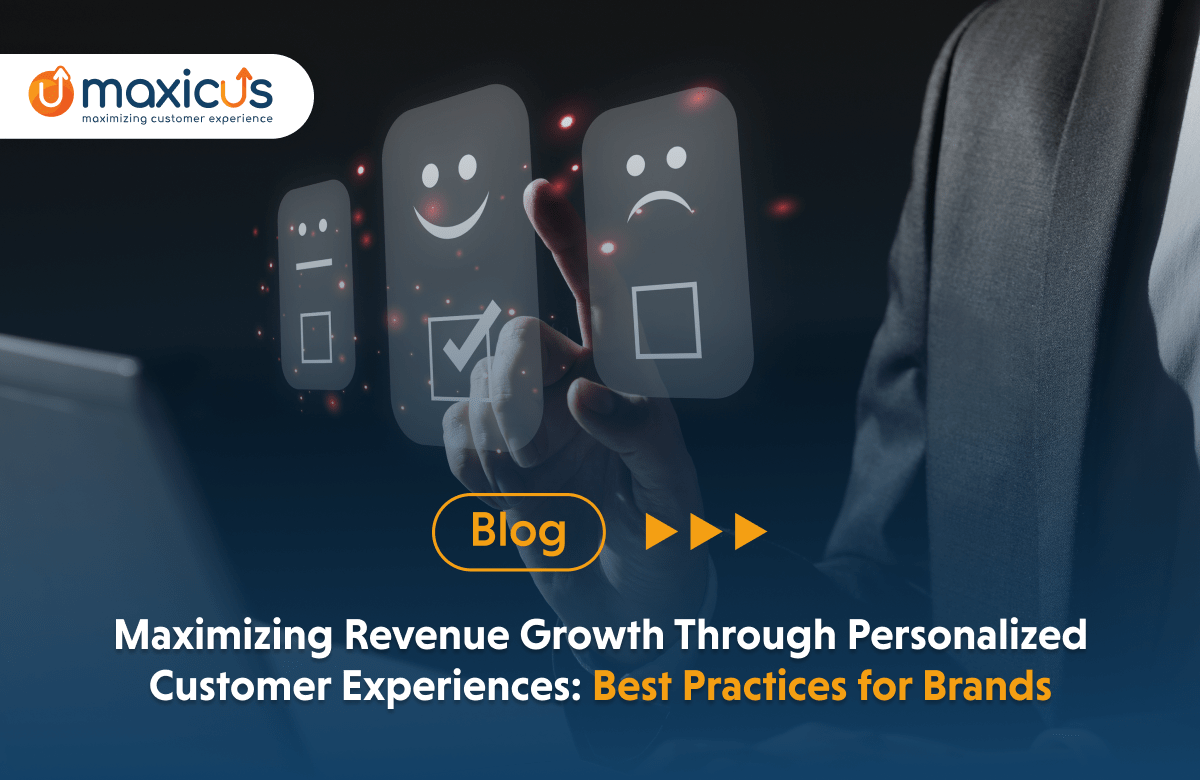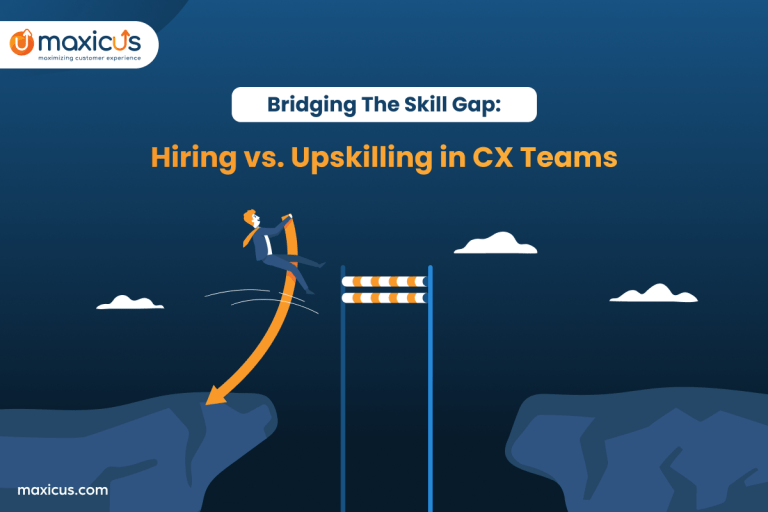Maximizing Revenue Growth Through Personalized Customer Experiences: Best Practices for Brands
In the current business world, revenue growth is not just about providing a good product or service anymore. It has become all the way more customer centric where customer engagement and experience is a new tool for maximizing revenue growth. Brands focus on how well they connect with customers, and they make sure that the customer feels valued. Therefore, personalized customer experience is the core of brand success, and when done right, these experiences can significantly boost your revenue.
A PwC report shows that 73% of consumers say their buying decisions are influenced by customer experience. This implies that your approach to customer service and how you make each interaction personal can directly impact your bottom line.
So, in this blog let us explore how personalization can enhance customer experience and grow your revenue? Along with some best practices that can help brands build customer loyalty and increase profitability.
Why Personalized Customer Experiences Matter for Revenue Growth
It should be understood that personalization is more about considering your customer as an individual and catering to their requirements as your unique needs. By doing so and meeting the customers’ preferences, brands can make the customers believe that they understand and appreciate their customers. Personalized customer experience drives customer loyalty naturally. When customers feel valued and connected to the brands they are more likely to stick around the brand. In fact, research from Forrester indicates that companies that focus on delivering better customer experiences see 1.6 times faster revenue growth than those that don’t.
Customer Experience Best Practices to Boost Revenue
- Use Data to Personalize Every Step
Data is the key to personalization. Whether it’s their browsing history, past purchases, or interaction preferences, knowing what your customers want allows you to tailor the experience accordingly.
Best Practices:
- Segment Your Audience: Using tools like CRM will help in segregating your customers based on behavior, preferences, or location. This will help you in drafting targeted marketing messages that feel relevant to each customer.
- Track Customer Behavior: Monitoring customer behavior like their time spent on the website will help you in making recommendations that are more likely to resonate with them.
2. Focus on Omnichannel Experiences
Nowadays, customers like to engage with the brands across multiple Platforms. It could be be it social media, websites, or in-store experiences.Therefore a hasslefree omnichannel experience ensures better customer satisfaction and retention.
Best Practices:
- Connect Your Online and Offline Channels: Brands should ensure that customers can move effortlessly between different touchpoints, like starting a purchase online and completing it in-store.
- Tailor Messaging to Each Channel: Depending on the channel customization of message is important as customers interact differently on different platforms.
Example: Samsung is a great example of a brand that’s nailed omnichannel experiences. Their customers can use their website for live demonstrations of the products, see personalized recommendations, and check out in-store. This creates a seamless experience that drives customer loyalty.
3. Map the Customer Journey
Mapping the customer journey from the first point of contact to making a purchase — and beyond will help in personalizing the interactions at every stage and thus improving customer engagement.
Best Practices:
- Create Journey Maps for Different Segments: It is so because every customer has a different journey. They could be first time visitors or could be an old customer looking for some new offers.
- Improve Key Touchpoints: Look at key stages in the journey, like browsing products or completing a purchase, and find ways to enhance them.
Data Insight: McKinsey research shows that companies using customer journey mapping techniques see a 10–15% increase in revenue and lower customer churn rates.
4. Providing tools for Delivering Personalized Service
Your frontline employees are often the face of your brand, especially in retail or customer service. Giving them the tools like CRM, knowledge management platforms like Knowmax will provide information they need to personalize interactions with customers.
Best Practices:
- Provide tools training: Employees should be trained on tools like CRM and knowmax so that they know how to use customer data.
- Equip Staff with Customer Information: With access to customer history and preferences, employees can make informed decisions, whether they’re recommending products or resolving complaints.
Example: Maxicus is one such business management platform that equips their employees with customer data, so when customers initiate an interaction, they can receive personalized attention based on their past purchases and preferences. This attention to detail plays a major role in customer retention and process revenue.
5. Emotional Connection is Key
Data driven approach is important for customer success but at the same time brands should also create an emotional connection with their customers. Humanizing your brand and showing that you care about your customers as individuals tends to gain customer loyalty.
Best Practices:
- Celebrate Milestones: Recognizing important dates like customer birthdays, anniversaries, or even their loyalty to your brand through personalized offers can make them feel valued.
- Personalized Content: Beyond products, create stories, videos, or blog posts that resonate with your audience’s lifestyle and values.
The Impact of Personalized Experiences on Revenue
It is important to measure the impact of these metrics on revenue growth. Key metrics such as customer retention rate, average order value, and lifetime customer value can give you a clear picture of your ROI.
- Customer Retention Rate: A higher retention rate means customers are returning, which leads to more revenue over time.
- Average Order Value (AOV): Personalizing recommendations enhances the customer experience and thus can increase the amount customers spend per transaction.
- Customer Lifetime Value (CLV): When customers can relate to your brand they tend to spend more over their lifetime with you. Some reports say that personalization can lead to 3X more revenue growth compared to businesses that don’t personalize.
Maximizing Revenue Growth with Maxicus
Conclusion: A Personal Touch Leads to Revenue Growth
With this blog, we can conclude that customer experience is the key driver of revenue growth. Brands can increase their customer retention rate and customer satisfaction by focusing on personalization. Companies should leverage tools like knowmax and CRM to cater to the customer’s requirements.To make your customers feel valued, brands can use analytics data or build emotional connections through personalized service; the results are clear: personalized customer experiences lead to revenue growth
So, start implementing these customer experience best practices today With maxicus as your partner watch your business grow — not just in numbers, but in customer loyalty, satisfaction, and trust.










